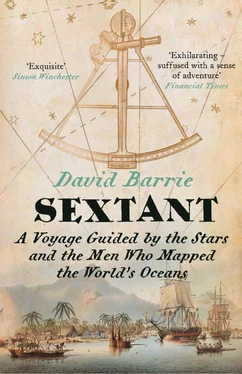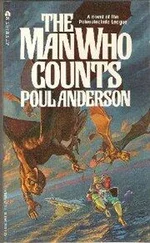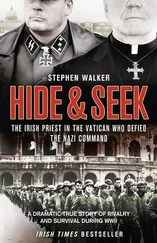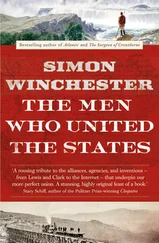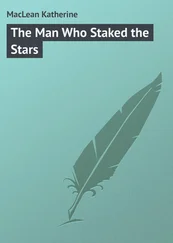As a teenager I sailed to Normandy and Brittany and around the west coasts of Ireland and Scotland. These excursions offered plenty of navigational challenges – the English Channel with its strong tidal currents and heavy shipping traffic is a dangerous stretch of water and the many rocky shoals of Brittany, Ireland and Scotland demand respect – but they did not call for the use of a sextant. Instead we relied on dead reckoning (DR – using the distance travelled and the course followed to estimate your position) corrected by radio direction-finding (RDF – fixing the boat’s position by taking compass bearings of radio beacons). If sailing at night, compass bearings of lighthouses were helpful too. While these methods worked well enough for short coastal passages, I wanted to know more: I was determined that one day I would learn how to navigate the open ocean by the sun and stars. I had not yet even seen a sextant, but the mysteries of celestial navigation already had me under their spell.
*
Just ten years after seeing Mutiny on the Bounty I got my first chance to handle a sextant when a family friend invited me to help him sail across the North Atlantic in his 35-foot sloop, Saecwen . fn2Colin McMullen was a retired Royal Navy captain and like many naval officers he was easy-going, relaxed and charming – useful if not essential qualities when sharing cramped accommodation for any length of time. Colin loved nothing better than an impromptu party. On the slightest pretext he would get out his accordion and start a ‘sing-song’, and if he was in particularly high spirits he might even put on a false beard and impersonate an ancient mariner with a strong west-country accent.
Colin was also fond of practical jokes, one of which almost cost him his life. As a young midshipman on board a small yacht being towed by a much larger vessel, he decided it would be amusing to climb along the tow rope and appear – as if by magic – on the deck of the mother ship. This meant scrambling along a heavy hawser, the middle of which frequently dipped beneath the surface of the sea. Colin was barely able to hold his breath long enough and nearly lost his grip as the cold, fast-moving water tugged at his submerged body. He was carpeted for this crazy escapade, but in the Royal Navy of the 1920s there was room for colourful characters, and it did his career no harm.
Colin had been messing about in boats since his childhood days at Waterville in County Kerry during the First World War. When he was posted to Malta in the 1930s he was given the enviable task of delivering the Commander-in-Chief’s official yacht to Venice, and I remember him talking rapturously about the summer days he spent along the Croatian coast aboard this large and elegant vessel. Most of his sailing, however, had been on a much more modest scale – notably in a small yacht called Fidget that he shared for a time with a group of fellow naval officers.
Colin bought Saecwen after retiring from the navy, and I first crewed for him when the two of us sailed her along the south coast of England from Dartmouth to her home port, Lymington, in early January 1972. It was an overnight trip and the weather was clear, cold and windless. As we motored slowly across the wide expanse of Lyme Bay I watched the ‘loom’ of French lighthouses, one of which – on the notorious Roches Douvres reef off the coast of Brittany – was nearly 80 miles away, far beyond the range at which it would normally be visible. The distant pencil beam of light rose briefly from below the horizon, sweeping up and over like the headlamps of a car making a sharp turn on the far side of a hill. fn3
In the middle of my watch I heard the hatch slide back, and there was Colin – who should have been asleep – with two cups of hot cocoa. While I steered we sat together looking up at the night sky, our breath smoking in the cold. It was then that we first talked about celestial navigation. Colin pointed out the stars to me and recalled his days as a young naval cadet, just after the First World War, when learning to handle a sextant and plot a line of position had been nothing but a chore. Now he was planning a transatlantic cruise in Saecwen and was looking forward to brushing up his old skills. Nothing was said at the time, but later that year Colin asked if I might be free for six weeks or so the following summer; the trip to America was going ahead and he was looking for crew on the return voyage to England. As a university student with time to spare I eagerly accepted the invitation: here was a chance not only to cross an ocean under sail but also to learn the art of celestial navigation from a professional whom I admired. But transatlantic passages in small boats were not yet the fairly routine events they have since become. Looking back I am amazed that my mother, who had been widowed not long before, raised no objections. She must have felt the risks were worth taking.
*
On a sticky evening in early July 1973 I arrived at Falmouth, a small town on the coast just north of Portland, Maine. It was my first visit to the USA, and I had travelled up from New York on the Greyhound bus. The licence plates on the cars announced that I was in ‘Vacationland’, the temperature was in the 90s and the humidity was only slightly less than in Manhattan, though the still air was refreshingly clean. From the bus terminal I took a cab to the Portland Yacht Club, and as I walked down the jetty I caught sight of Saecwen lying at a mooring only 50 yards away. Rocky islands covered with hemlock and spruce lay further offshore. Colin was watching out for me and pulled across at once in the rowing dinghy to pick me up. It was strange to step aboard Saecwen again in such different surroundings, but as the deck gently rocked beneath my feet I felt almost as if I had come home. I slung my bag into the starboard quarter berth where I was to sleep for the coming weeks, absorbed the familiar smells, and came up on deck where Colin handed me a can of beer – very welcome in that heat. He was not alone on board Saecwen . There were two other crew members at this stage – Colin’s sister, Louise de Mowbray, and his cousin, Alexa Du Vivier, who was just seventeen. We talked about Saecwen ’s voyage out across the Atlantic – it had been tough going, with several gales, and one member of the crew had suffered so badly from seasickness that he had been forced to leave the boat in the Azores. Transatlantic passages by small yachts were then sufficiently rare that Saecwen ’s British ensign had caused a lot of excitement when she arrived in Gloucester, Massachusetts. The news media had soon discovered Colin who, playing the role of old British sea-dog to perfection, had been interviewed on TV and radio. He was delighted by all the attention.
We set sail the next morning. Wherever Saecwen dropped anchor, as we cruised north and east through the rocky, wooded islands that sprinkle the coast of Maine, complete strangers appeared offering food, showers and lifts to the shops – and we did not hesitate to accept. I started to read Samuel Eliot Morison’s classic account of the early European voyages of discovery to the Americas, which I found on board. I learned – to my surprise – that it was French rather than British mariners who had first properly charted the seaboard along which we were now sailing. The north-east coast of America is notorious for its cold fogs, but luckily we encountered little until we set out across the Bay of Fundy, from Grand Manan Island, past Yarmouth towards Cape Sable at the southern end of Nova Scotia. Fog is strangely disorienting and at times it was so thick that we could hardly see the bows of the boat from the cockpit. Colin was busy plotting our position by RDF as we rounded Cape Sable by night when we had a bizarre encounter with a ferry whose approach first became apparent when we heard the distant beat of pop music. It grew steadily louder until at last the thump-thump of the ship’s propellers also became audible. By now we were really worried, but there was little we could do to reduce the risk of a collision apart from tooting feebly on our small foghorn, all too well aware that we had little or no chance of being heard. Suddenly the blurry outline of a big ship, brilliantly illuminated, emerged from the fog, and the air was filled, bizarrely, with Bill Haley’s ‘Rock Around the Clock’.
Читать дальше
